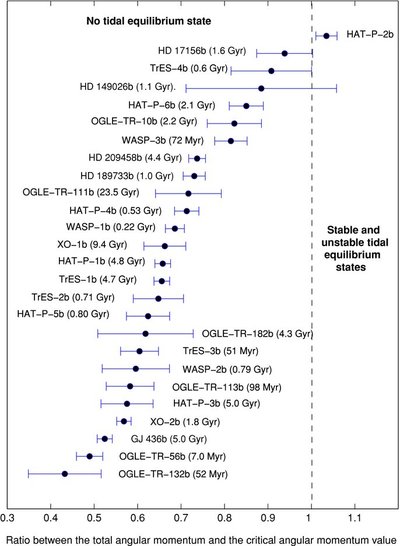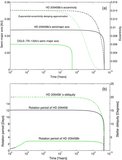Image Details

Caption: Figure 1.
List of transiting planets classified by increasing values of the ratio between the total angular momentum of the system
L
tot and the critical angular momentum
L
c (see the text). The error bar indicates the standard deviation of the ratio distribution around its mean value. The time
remaining for each planet to collide with its host star as obtained from our numerical computations with
Q′
![]() =
Q′
p
= 10
6 (see Section 3) is indicated in brackets. Note that this time is strongly model dependent. The HAT-P-2 system is tidally
unstable and very close to the marginally stable regime
=
Q′
p
= 10
6 (see Section 3) is indicated in brackets. Note that this time is strongly model dependent. The HAT-P-2 system is tidally
unstable and very close to the marginally stable regime
 . Because its present orbital distance (~0.068 AU) is larger than the stable equilibrium value (
a
1~ 0.048 AU), the system will reach this state asymptotically.
. Because its present orbital distance (~0.068 AU) is larger than the stable equilibrium value (
a
1~ 0.048 AU), the system will reach this state asymptotically.
Copyright and Terms & Conditions
© 2009. The American Astronomical Society. All rights reserved.




